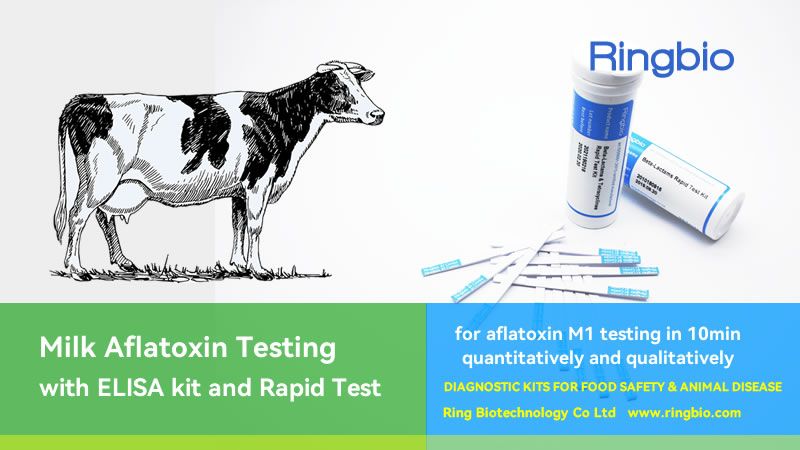Why is milk aflatoxin testing so important for dairy industry?
Here are the answers,
- Health concerns: Aflatoxins are toxic substances produced by certain types of fungi that can contaminate milk and other food products. These toxins can cause serious health problems in humans, including liver damage, cancer, and other diseases.
- Food safety regulations: Many countries have strict food safety regulations that require milk and other food products to be tested for aflatoxins. This is to ensure that consumers are not exposed to harmful levels of these toxins.
- Quality control: Aflatoxin testing is an important part of quality control in the dairy industry. By testing milk for aflatoxins, dairy companies can ensure that their products meet certain quality standards and are safe for consumption.
- Economic impact: Aflatoxin contamination can have a significant economic impact on the dairy industry. If milk is found to be contaminated with aflatoxins, it may need to be discarded, which can result in financial losses for dairy farmers and processors.
- Consumer confidence: By testing milk for aflatoxins, dairy companies can demonstrate their commitment to food safety and quality. This can help to build consumer confidence in their products and maintain a positive reputation in the marketplace.
Currently in EU, China, USA, strict MRLs have been established for aflatoxins in milk, among which, the MRL of EU is the strictest one - 0.05ug/kg in liquid milk.
How is milk aflatoxin testing performed?
There are several methods used to test for aflatoxins in milk. Here are three common methods:
- Enzyme-Linked Immunosorbent Assay (ELISA): This method uses antibodies that are specific to aflatoxins to detect the presence of these toxins in milk. The milk sample is mixed with a solution containing the antibodies, and if aflatoxins are present, they will bind to the antibodies. This binding can be detected using a colorimetric reaction, which indicates the presence and amount of aflatoxins in the sample. For example, the Ringbio aflatoxin M1 ELISA kit is based on this principle to detect aflatoxin M1 in milk, cream, butter, etc.
- High-Performance Liquid Chromatography (HPLC): This method separates the components of a milk sample using a chromatography column. The separated components are then passed through a detector that can detect the presence of aflatoxins. The amount of aflatoxins in the sample can be determined by comparing the detector response to that of a known standard. For example, the current ISO standard for milk aflatoxin testing is based on this method.
- Fluorescence Polarization Immunoassay (FPIA): This method uses a fluorescent label to detect the presence of aflatoxins in milk. The milk sample is mixed with a solution containing antibodies that are specific to aflatoxins. If aflatoxins are present, they will bind to the antibodies, causing a change in the fluorescence polarization of the sample. The amount of aflatoxins in the sample can be determined by comparing the fluorescence polarization to that of a known standard.
In addition, aflatoxin M1 rapid test kit is also used quite frequently in farms, milk collecting center and dairy manufacturers. Compared with the above 3 different methods, aflatoxin M1 rapid test kit only takes 10min to get a visual result, no extra instrument or devices are required. Even farmers can run the testing. This method is now widely accepted in many countries such as EU, China, Russia and USA, etc.
The current ISO standard for milk aflatoxin testing
ISO 14501:2007 | IDF 171:2007 Milk and milk powder — Determination of aflatoxin M1 content — Clean-up by immunoaffinity chromatography and determination by high-performance liquid chromatography, this is the latest ISO standard. In this standard, it specifies a method for the determination of aflatoxin M 1 content in milk and milk powder. The limit of detection is 0,08 µg/kg for whole milk powder, i.e. 0,008 µg/l for reconstituted liquid milk. The method is also applicable to low fat milk, skimmed milk, low fat milk powder, and skimmed milk powder.




